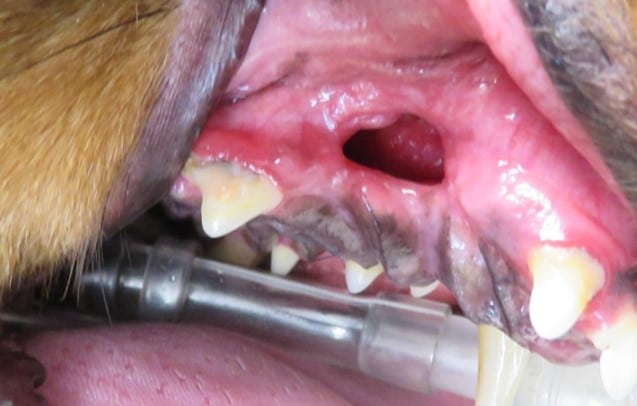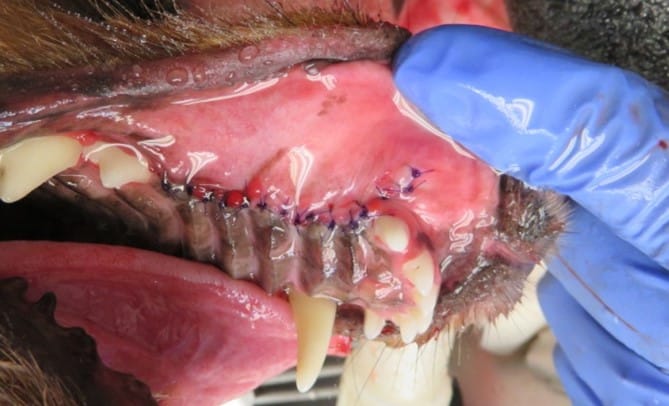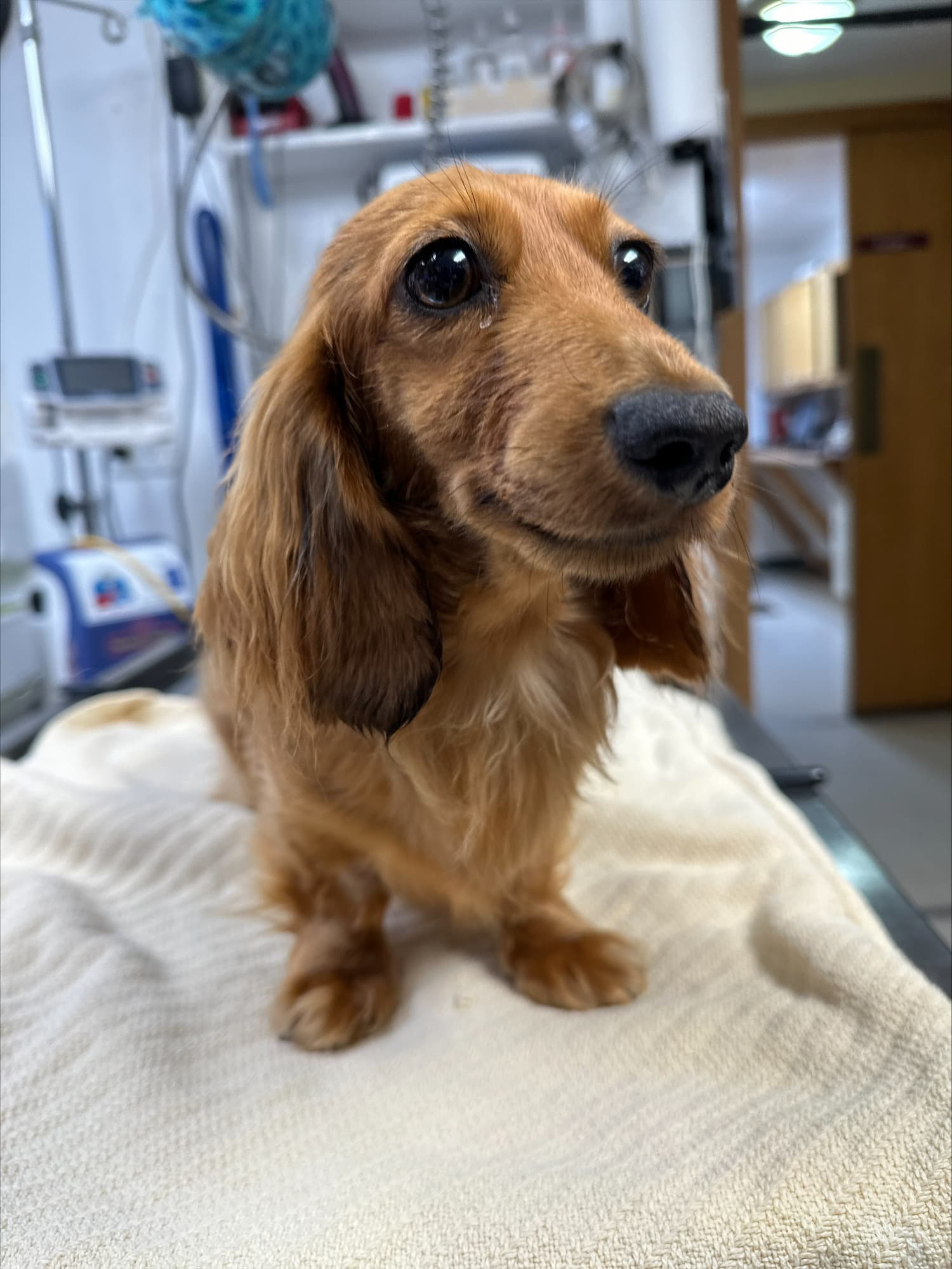Oronasal Fistulas Repair
Oronasal fistulas can occur in pets. Common causes of fistula formation include periodontal disease, an overly aggressive extraction of a pet’s tooth, incomplete healing after tooth extraction, or due to malocclusions where the lower canines are causing trauma to the roof of the mouth.
Dachshunds, in particular, are predisposed to periodontal disease, and one of the main locations where they can have bone loss is on the palatal aspect (roof of the mouth) of the maxillary canine teeth (upper canine). There is a very thin shelf of bone between the canine tooth and the nasal cavity. When there is bone loss in this area, it can lead to an oral-nasal fistula (abnormal communication between the nose and the mouth). If there is an oral-nasal fistula present, food/water/debris can become entrapped in this area and cause chronic irritation to the nasal cavity, leading to nasal discharge and sneezing.
Oronasal Fistula Surgery
Treatment is required for this condition and the best success is having this treated in a single procedure with a single mucogingival flap (an area of tissue inside the mouth) that has absolutely no tension. For chronic or severe oronasal fistulas they may require a double-layer flap technique.
After the surgery is performed for treatment of an oronasal fistula, they typically are sent home with antibiotics and pain medications. Clients are often instructed to feed soft food for a minimum of 14 days and potentially longer depending on the severity. Patients will always require an examination 2 weeks following surgery to ensure the area is healing and educate when the pet can start back on hard food and toys.

Before

After
Headline Here
This is just placeholder text. Don’t be alarmed, this is just here to fill up space since your finalized copy isn’t ready yet. Once we have your content finalized, we’ll replace this placeholder text with your real content.
Sometimes it’s nice to put in text just to get an idea of how text will fill in a space on your website.
Traditionally our industry has used Lorem Ipsum, which is placeholder text written in Latin. Unfortunately, not everyone is familiar with Lorem Ipsum and that can lead to confusion. I can’t tell you how many times clients have asked me why their website is in another language!

Call (218) 461-4825 or book online to schedule your pet’s advanced dental appointment.

Frequently Asked Questions About Oronasal Fistulas
How is an oronasal fistula treated, and what is the recovery like?
Oronasal fistulas are treated surgically, often with a mucogingival flap technique to close the fistula. Post-surgery, pets are typically prescribed antibiotics and pain medications, and they should be fed soft food for at least 14 days. A follow-up exam is necessary after two weeks to ensure proper healing and determine when they can return to hard food and toys.
What are the symptoms of an oronasal fistula in pets?
Symptoms of an oronasal fistula include nasal discharge, sneezing, and irritation in the nasal cavity due to food, water, or debris becoming trapped in the abnormal opening. These signs indicate the need for veterinary care to prevent further complications.
What is an oronasal fistula, and what causes it in pets?
An oronasal fistula is an abnormal opening between the mouth and the nasal cavity in pets, commonly caused by periodontal disease, improper tooth extraction, incomplete healing after extractions, or malocclusions where the lower canine teeth damage the roof of the mouth. Dachshunds are particularly predisposed to developing these fistulas due to bone loss near their upper canine teeth.
Fun Fact! Do you know which dog breed is mostly likely to have oronasal fistulas?
Dachshunds are the most common dog breed according to Sauvé et al. They are 3.3 times more likely to have an oronasal fistula or oroantral fistula.

